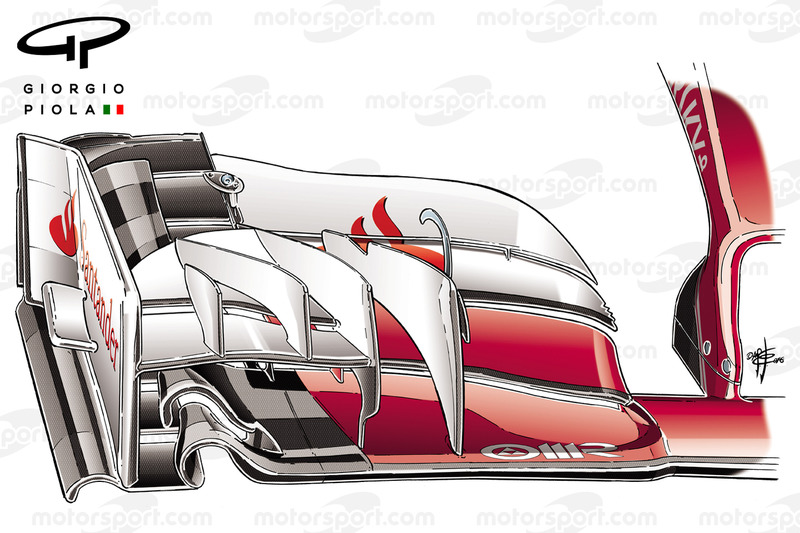Giorgio Piola's Australian GP tech wrap-up
There may have been just two weeks between the end of testing and the first race of the season but, as Giorgio Piola and Matt Somerfield found, there was still plenty of interesting tech on the cars in the Australian GP.

Giorgio Piola
The close proximity of the Formula 1 season opener to the end of pre-season testing meant there was not much time for teams to bring updates to Australia.
However, there were still plenty of interesting items on display, and the weekend offered the chance to look in much closer detail at some concepts being used.
It also allowed us to understand better how some of the designs - like the Toro Rosso S-duct - actually work.
Toro Rosso
The Faenza-based team may be the Red Bull junior team but the use of the 2015 Ferrari power unit this season already appears to have delivered an uplift in performance, which should remain there at least for the short term.
The team's S-duct was already apparent during the pre-season test, but the airflow routing was a little more enigmatic. However, in Australia we uncovered the details.
Four NACA-style inlets are placed on the lower surface of the nose, with the two smaller, more forward-placed ducts fulfilling the role of driver and electronics cooling.
Meanwhile, the two larger, more rearward ducts feed the S-shaped duct, housed within the nose box.
Airflow passing from these larger inlets passes through the S-duct and out of the aperture atop the nose, reducing the amount of airflow detachment that ordinarily occurs.
At the rear of the STR11 we find another small alteration, as the team place a small vertical floor strake on top of the diffuser's ramp. This sits just ahead of the slotted endplate mount, improving its performance and its effect on the diffuser.
Mercedes
Following an incident in Friday free practice where Nico Rosberg destroyed his nosecone, the team opted to run an older specification without the 'S' duct for the remainder of the Friday sessions.
The team only had three of the newer specification versions available in Melbourne and didn't want to risk another incident that meant neither driver could use it.
Ferrari
Ferrari had a relatively quiet pre-season test in terms of trying new parts, which, when dealing with a sea change like it has had, is hardly surprising.
During testing it did make numerous alterations to the front wing though, which stayed on board for the Australian GP. Firstly, placing a slotted canard on the endplate, changing the pressure gradient and the way in which airflow moves around the front wheel.
Secondly, they placed a notch in the 'R' cascade, changing the shape of the vortex it sheds and its target position on the tyre face.
Lastly, toward the end of the test, the team introduced a new flap with a serrated profile at its tip. These serrations are placed in an area critical to the shaping of the Y250 vortex, which is predominantly formed by the juncture of the neutral central section of the front wing with the flapped section.
McLaren
Although not new, having previously been used on the MP4-30, the attention to detail on the camera mounts cannot be ignored, especially as the airflow structure is important when considering their new wishbone configuration.
The mounts feature a central slot, allowing airflow to move between the pressure surfaces, increasing their aspect ratio.
McLaren seems intent on garnering performance from these tiny details with the team first to introduce slots in the front wing pillars, as noted at the car's launch.
A small change was applied at the rear of the MP4-31 as the team added another pair of winglets (highlighted in green) either side of the Y150 crash structure ladder winglet.
This appears to be a change made on the go with the material differing in construction from the main winglet, as the team has likely 3D printed them on site.
The team also had a smaller cooling outlet available to it in Australia than it had previously used during pre-season testing, perhaps highlighting some of the strides it had made with power unit supplier, Honda.
However, changes to the rear brake ducts saw a small increase in cooling capacity.
Be part of Motorsport community
Join the conversationShare Or Save This Story
Subscribe and access Motorsport.com with your ad-blocker.
From Formula 1 to MotoGP we report straight from the paddock because we love our sport, just like you. In order to keep delivering our expert journalism, our website uses advertising. Still, we want to give you the opportunity to enjoy an ad-free and tracker-free website and to continue using your adblocker.


















Top Comments